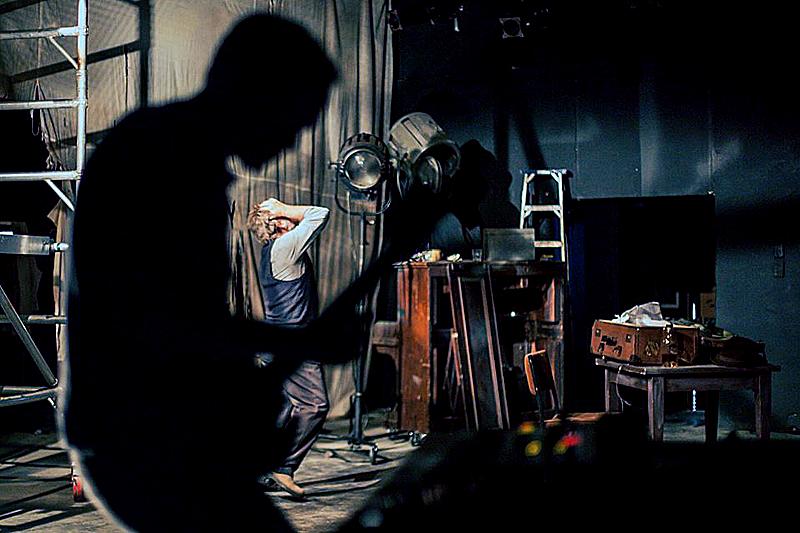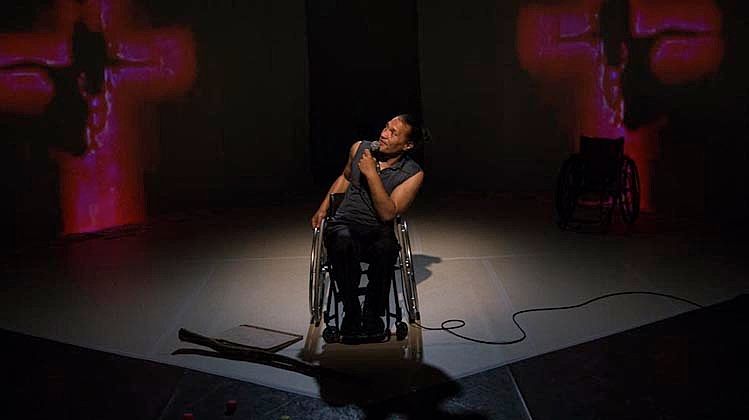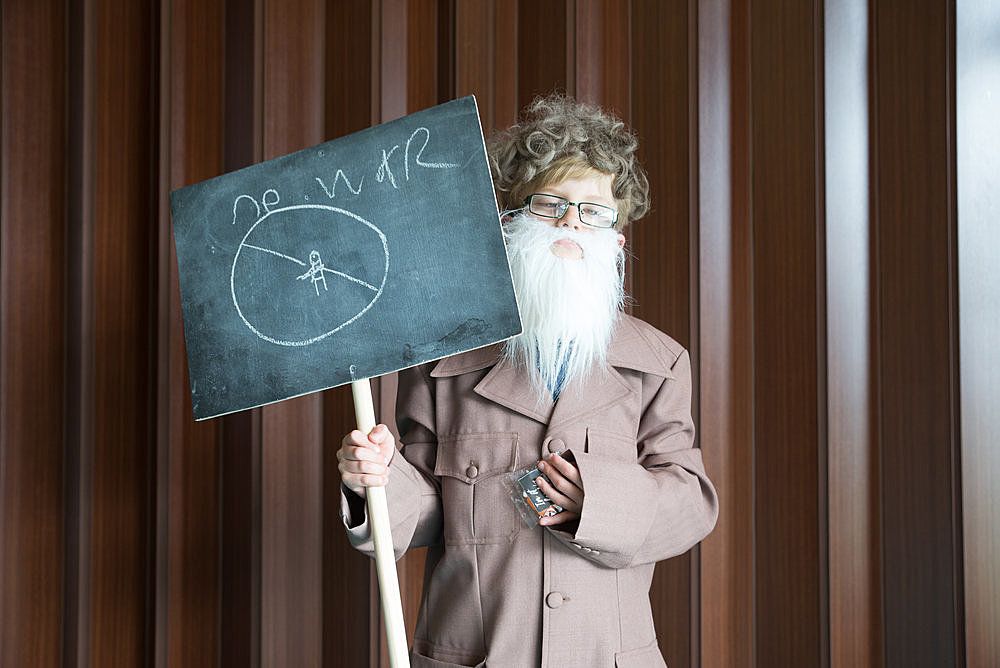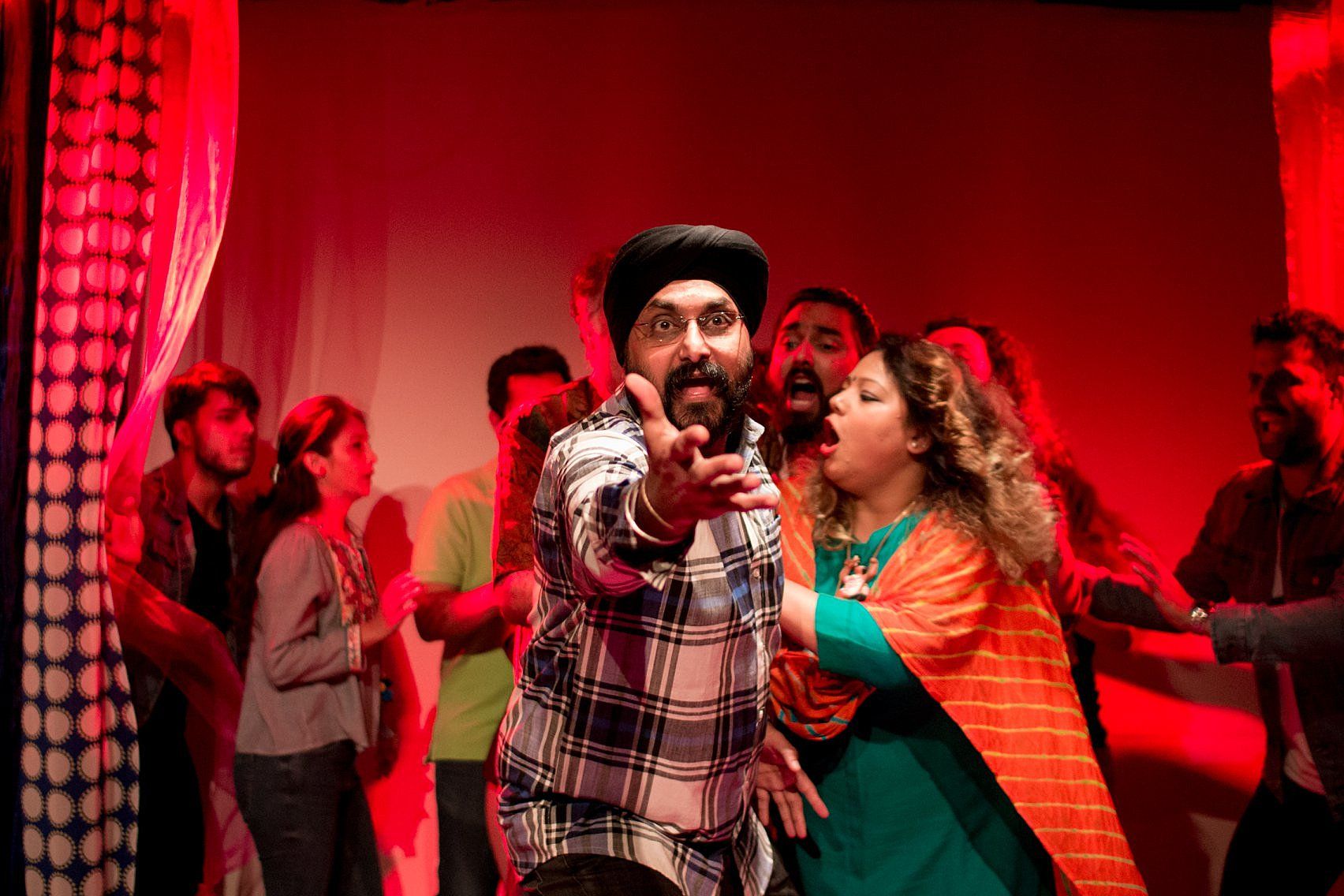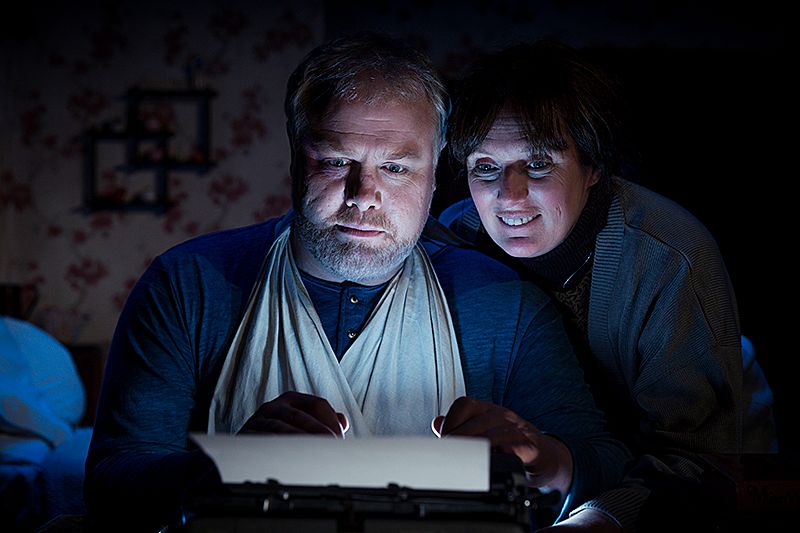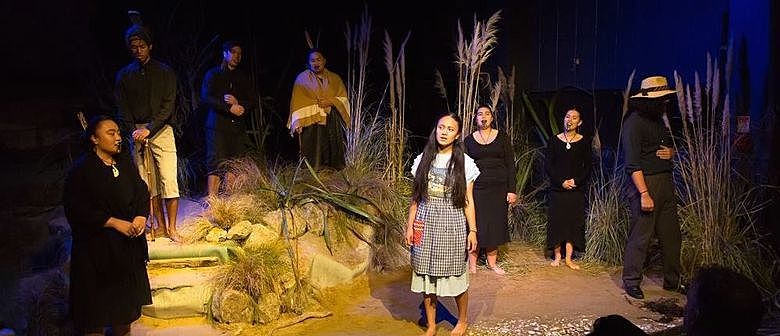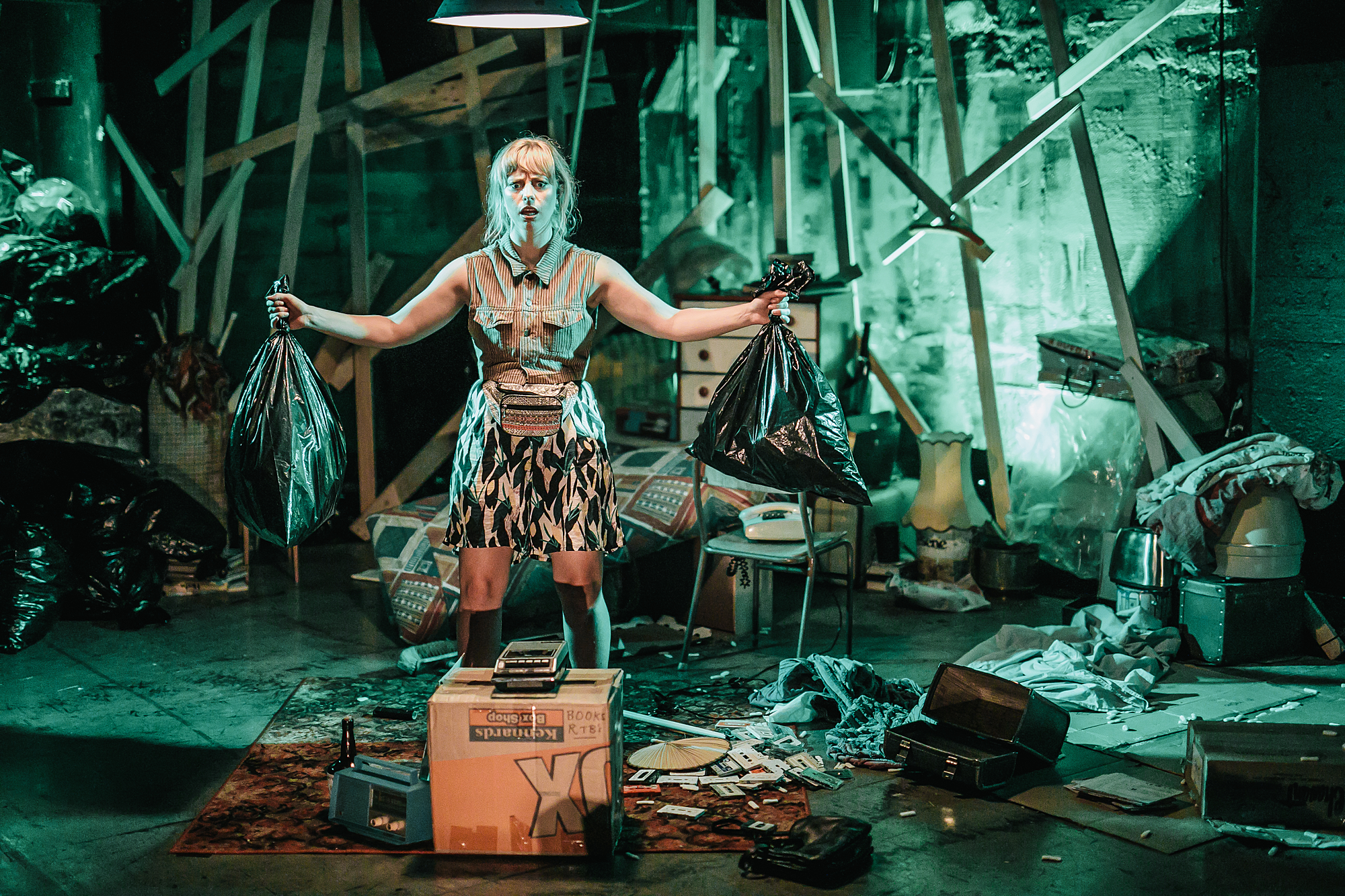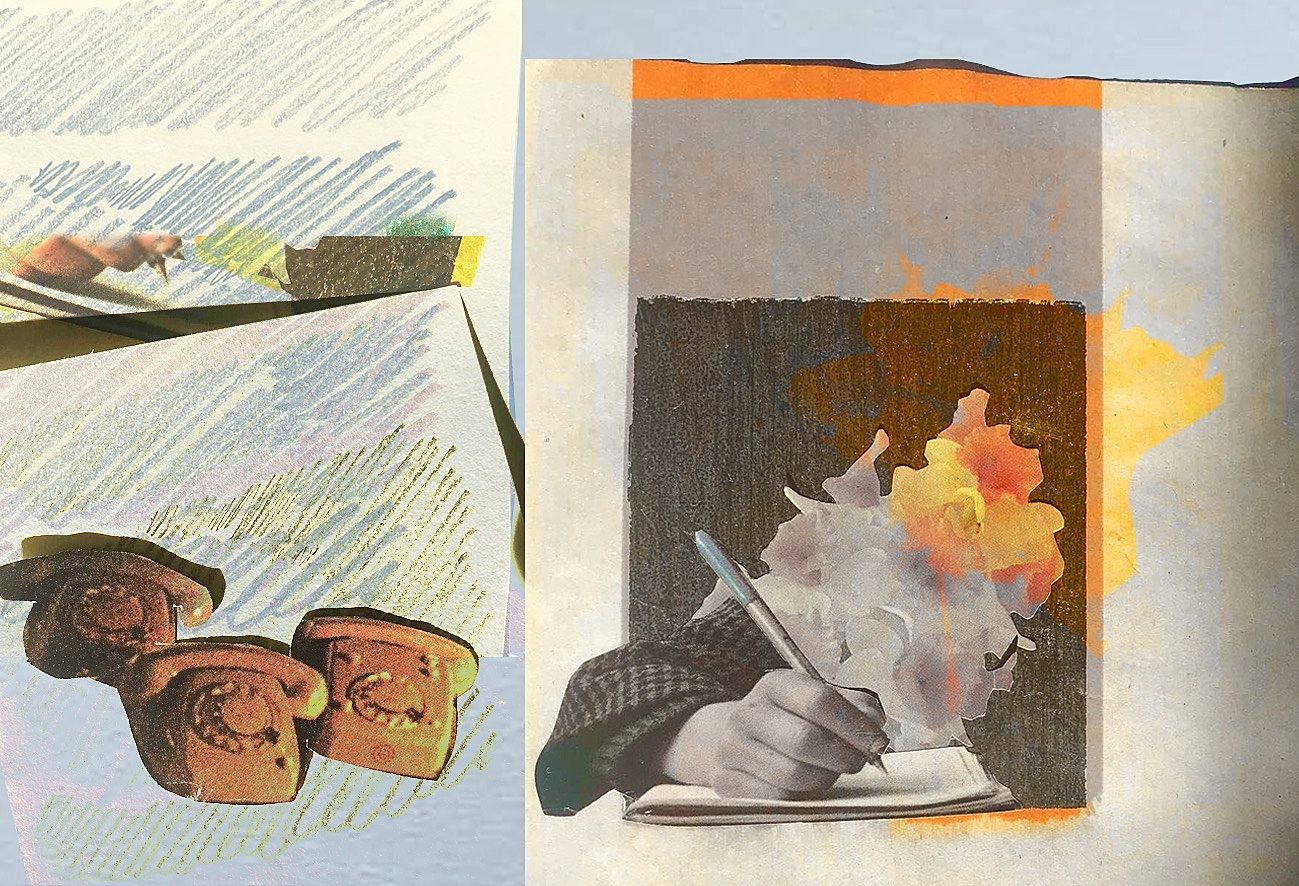Whakanuia: Ten Things to Celebrate in New Zealand Theatre in 2018
Theatre Editor Adam Goodall (Wellington), Kate Prior (Auckland), Erin Harrington (Christchurch) and Emily Duncan (Dunedin) weigh in on the theatre that excited them, provoked them and made them fall in love in 2018.
2018 has been a rough year for New Zealand theatre in many ways but there was still so much to celebrate. Theatre Editor Adam Goodall (from Wellington), Kate Prior (from Auckland), Erin Harrington (from Christchurch) and Emily Duncan (from Dunedin) talk about the shows that excited them, provoked them and made them love 2018 despite its challenges.
In May, Dunedin’s Fortune Theatre closed its doors. That was, without question, the most significant theatrical event of the year. In a tiny theatre ecosystem with six major professional companies, it’s hard to overstate how huge it is when one of those companies gives up and dies. It’s seismic. It leaves a gap in the landscape. All the people closest to it can do is watch the dust clear and wonder what went wrong.
There was a lot of wondering, some of it in hushed whispers, some of it on major websites and in the pages of major newspapers. A lot of that wondering was presented as unassailable fact: this closure was the result of small audiences, low ticket sales, etc, etc. Later that May, in a piece on this site, our former Theatre Editor Kate Prior called bullshit on all of that. “The Fortune couldn’t adapt in time,” she said. “Its closure wasn’t entirely due to the constant struggle to get bums on seats, but the creakingly slow wheels of governance.”
I bring up Kate’s piece because in it she draws on the work of Australian arts advocate Robyn Archer, who talks about resilience in the arts. This idea of resilience is pretty useful for helping us understand the New Zealand theatrical landscape in 2018. Kate writes:
In the natural world, resilience is "the capacity of a system to absorb disturbance and still retain its basic function." It contends that systems which are more likely to absorb disturbance are those which focus not only on the high-performing elements (tall kauri like Roger Hall plays), but diverse risks (funghi and fresh shoots like fringe shows, education, youth and community participation).
2018 has been a hell of a disturbance, and it’s not all that clear that New Zealand theatre has absorbed the shock. Fortune Theatre closed. A nearly six-month leadership void at BATS Theatre wasn’t communicated to performers, leaving many of them without guidance. Auckland Theatre Company acquiesced to a subscriber rebellion by shutting women writers and directors out of the Waterfront Theatre in 2019. The representation of women in key creative leadership roles isn’t much better at Palmerston North’s Centrepoint Theatre and Christchurch’s Court Theatre. At Centrepoint, three of 16 named writers, directors and devisers in their 2019 season are women; in Court's 2018/19 season (which started in June and ends next July), it’s ten of 38.* (Circa and Silo, at 21/49 and 7/10 respectively, are doing much better.)
Offstage, Auckland Council hit the headlines for leaving out any commitment to the sustenance and growth of the Auckland arts and culture sector in its draft Auckland Plan. Christchurch City Council opted to move ahead with a performing arts precinct without Michael Bell’s community-minded Andromeda concept, a short-sighted choice Erin Harrington took to task on this site back in July. Theatreview stopped reviewing in Auckland and Fairfax dropped what little local arts coverage its papers had with little fanfare or consultation. It’s currently unclear how the Wellington City Council’s $16 million investment in local arts organisations will filter down to Wellington theatre, outside of a commitment to increased funding for Circa Theatre.
In her piece about the Fortune’s closure, Kate Prior reassures the reader that, “Thankfully, in ecology and in the arts, failure and fallout isn’t entirely negative.”
Resilience Thinking outlines that there are four phases in nature: rapid growth, conservation, release and re-organisation. Rapid growth is when artists develop a reputation and make stuff for little monetary reward. Conservation is when growth slows and ideas develop, embed or become entrenched. Release can happen in a heartbeat. The longer the conservation phase persists, the smaller the shock needed to end it. The dynamics are chaotic, but the destruction that ensues means creativity can flourish.
2018 has been rough. There’s not really any getting around that. But creativity has flourished in the wake of it. I think about the artists in Dunedin, pulling together literally hours after Fortune’s closure to protect theatre funding in the city and start developing a professional theatre concept that better meets their community’s needs. I think about companies like Barbarian and Red Scare in Wellington, FAFSWAG and Prayas and Agaram in Auckland, Two Productions and Y Not in Christchurch: all nurturing the shoots in amongst the kauri and, where necessary, carrying out controlled burns of the status quo here and there.
The creativity is there: people are working on new solutions and new models, and resisting a state of play that’s often so crushingly, predictably inequitable. And disturbance is coming. If this year has shown anything, it’s that disturbance is inevitable, and it’s going to hurt.
Whether our precarious forest of theatre survives disturbance comes down to this. The people who hold the power and resources in our ecosystem can use those things to care for the ground cover, the shoots and saplings, and save the forest. Or, they can use those things to protect the trees at the expense of the new growth, and we will lose the forest – but something very different might grow in its place.
But back to this whakanuia. We’ve needed things to celebrate in 2018 in spite of – even because of – all these challenges. It’s so good, then, that even in this really tough year, we’ve seen productions that have excited us, provoked us and made us fall in love with them. Shows that have pushed boundaries and empowered their makers, and been the backdrop for some wonderful growth in the industry and the community and the medium. Whether they’re in Auckland (Kate Prior), Christchurch (Erin Harrington), Dunedin (Emily Duncan) or Wellington (me), these are the lights that have cut bright through the dark and compelled us to keep our own lights burning.
AN ILIAD
For Dunedin theatre, 2018 has been – to colloquially term it – epic. And at times, nothing short of ironic. Epic and ironic collided at the Dunedin Theatre Awards on December 10, when the Jonathan Hendry-directed An Iliad was awarded Production of the Year. An Iliad was a not-to-be-missed spectacular. Taking place on a (in hindsight portentously) tattered and forlorn stage, this deceptively simple duet between Michael Hurst’s Poet and Shayne P. Carter’s Musician was boldly poetic, drawing on the timeless congregational power of simple storytelling. It was a show that was met with awe from its audience – regular, irregular and entirely new to the theatre – and it was to be the Fortune Theatre’s final production. – Emily Duncan
MAGGOT
There were a few shows this year I just couldn’t shut up about: Talofa Papa, Drowning in Milk, La’u Gagana. But I don’t think I was as all in for a show as I was for Maggot. Returning to Wellington for this year’s New Zealand Fringe – merciful, as I’d bought tickets for its 2016 development season but got the time extremely wrong – Maggot was so goddamn funny I couldn’t breathe I was doubled over gasping I was crying so much I was dying I was dead I was in the fucking ground. Maggot felt not so much like a series of sketches as it did a series of escalating dares, a manic and unsettling crescendo with the can’t-tear-your-eyes-away energy of a school play where the kids have revolted and the teachers and parents are trapped in the bleachers. – Adam Goodall
GIDDY and CAMP BINCH
I love the freedom that the context of a comedy festival offers performers – there’s something about the singular target of the laugh that takes the pressure off all that meaning stuff, therefore creating space for it. Without question, one of the most fun nights I had in a theatre in 2018 was seeing a happenstance double bill of Leon Wadham’s Giddy and Chris Parker’s Camp Binch.
For an unassuming show in the squished Basement Studio, Wadham’s might have been one of the most physically demanding performances of the year. Weirdly unsettling (those sexual ducks) yet with a clear heartbeat underneath the manic energy, Giddy was a hilarious, mind-boggling exercise in muscular precision at breakneck speed.
As a counterpoint to the meticulous physical score of Giddy, Camp Binch saw Chris Parker in loose storytelling mode, with some even looser wig business. Delightful, and all of which belied a story with some big ideas, deeply felt. Camp Binch is the second part of what you could dub an informal Parker ‘trilogy’ (No More Dancing in the Good Room / Camp Binch / Sibs) in which the comedian draws on the material culture of his childhood growing up gay in a rugby city. In Camp Binch, Parker’s horizon line lifted beyond his own coming-out story to stare toxic masculinity straight in the eye. But this was no general, hashtaggy reprimand of our current sociocultural bête noire. He used the directness of his mode of storytelling to underline a very clear moral: school is tough, creativity is solace, and creative spaces are sanctuaries. Value them. – Kate Prior
MISERY
One of the most surprising shows of 2018 came from Christchurch’s most established company, The Court Theatre. William Goldman’s stylish adaptation of Stephen King’s pot-boiler Misery, the first show in the Court’s thus-far consistently good 2018/19 season, is a welcome (for me at least) foray into genre theatre. This mainstage programming is also an obvious attempt to broaden the Court’s audience, with the production acting as a populist middle ground between the charming, crowd-pleasing world premiere of Albert Belz's 80s coming-of-age dramedy Astroman and the January punk-goth production of Titus Andronicus. As directed by associate artistic director Dan Bain, it achieved a sense of intimacy and claustrophobia rarely seen on the Court’s broad mainstage, and it made excellent use of a revolving stage and some uncomfortable sound design to achieve scenes of excruciating suspense. I’d lay money on Lara Macgregor’s malignant, weighty take on murderous recluse Annie Wilkes as one of the best performances in New Zealand this year, and it sat in tension with Gavin Rutherford’s more restrained, but no less intense, performance as a captive, wounded writer.
When compared to fascinating avant-garde fare, like Free Theatre’s take on Tom Waits’ and Robert Wilson’s Alice, or my favourite show of the year, American performer Deanna Fleysher’s bonkers one-woman improvised film noir Butt Kapinsky, Misery is clearly well within the mainstream. That said, in the lead up to and wake of the Christchurch City Council’s announcement that the Court would indeed be rehomed in the still conceptual – and that’s a euphemism – Performing Arts Precinct, it signals an acknowledgement that broader audiences, and tastes, need to be catered to, especially by organisations with significant funding. – Erin Harrington
MEREMERE and RUSHES
Neither of Malia Johnston’s touring twins was the best show I saw this year – that was Tusiata Avia and Anapela Polata’ivao’s Wild Dogs Under My Skirt, a supercharged and exquisite machine of a show – but they were pretty damn close. One, Rushes, was a powerful river of spectacle celebrating bodies and movement. Assembling dancers of all ages, bodies and skill levels, Johnston and her team filled the entirety of Circa Theatre with a sublime immersive experience that mobilised your senses and constantly made you feel like you were discovering moments that had been hidden away from everyone else.
The other, Meremere, was equally spectacular – Rowan Pierce’s AV design, Ruby Reihana-Wilson’s lighting design and Eden Mulholland’s music worked in concert with dancer Rodney Bell to create breathtaking physical images. But it was also a warm and welcoming theatrical memoir about Bell’s years living rough in San Francisco. Bell jokes with the audience and talks with a charming sense of understatement; he has a way of making you feel like you’re the only one in the room with him, that his monologue is a conversation.
Bell was the deserved winner of the Grant Tilly Actor of the Year award at the Wellington Theatre Awards earlier this month (full disclosure: I was one of the judges). But the awards were presented on a raised platform without a wheelchair ramp, resulting in the frustrating scene of Bell being forced to choose between receiving his award in a place where most of the audience couldn’t see him or calling on his crew to carry him up the stairs to the podium. Bell chose the latter.
It’s a moment that’s emblematic of a broader tendency in our industry to pay lip service to inclusion and diversity while not doing the actual work, treating disabled performers and makers like guests in their own house. In a great article for the Playmarket Annual, Alex Lodge (who works with Waikato-based Deaf storytelling company Equal Voices Arts) writes that, “Taking the time to learn the tikanga of each community and shaping creative practice around that tikanga is, I think, a more important tool for inclusivity than arming artists from every community with three-act structures and Stanislavskian theory.” Lodge is right. We’ve got a lot of learning to do. – Adam Goodall
HIR
Silo Theatre’s 2018 contained two of the most intensely playful, idea-dense, and staggeringly well-designed American scripts in recent years: Taylor Mac’s Hir and Anne Washburn’s Mr Burns. Both could have only been born in America; they're wild love letters to and subversions of America’s dramaturgical whakapapa – whether that’s Sam Shepherd and Christopher Durang or vaudeville and Broadway. While director Oliver Driver didn’t quite capture the nuances of Mr Burns, Sophie Roberts’ direction of Taylor Mac’s Hir was sensitive and skilful, and made for one of the most profound experiences I had in a theatre this year.
Roberts deftly served Taylor Mac’s challenging script through a careful calibration of four excellent performances from a uniformly strong ensemble consisting of one of the greats letting rip in a role of a lifetime (Rima Te Wiata), and refreshing new talent (Adam Rohe) bringing sensitivity and – so simple, this, but so elusive – listening. The play is constantly billed as ‘wild’ and ‘explosive’ but I found Hir a surprisingly intimate, deeply moving experience. Amongst its many provocations, two questions hung in the air for me: how do we free ourselves from old ideas that still hold us in their grip? And what do we do with those who ruined us? Walking out, I had the strange sensation of simultaneously having seen it all and having never seen anything like it before. – Kate Prior
UP AND AWAY and PLAY PLAY
New Christchurch company Cubbin Theatre Company, established by Hannah Wheeler, Melanie Luckman and Amy Straker, is doing something genuinely innovative in its creation of quality professional theatre for the very young. Its first show, the delightful Up and Away, was aimed at pre-ambulatory infants and their caregivers, and combined song, soft movement, gentle and surprising shifts in sound, and a calming environment – diffuse light, all sat down on the mat – that balanced the engaging with the soporific. The babies loved it, and so did I. Apart from the fact that this was the theatrical equivalent of a couple of diazepam, a back rub, and a nice lemon honey drink, this show and its follow-up – the more vigorous Play Play, aimed at toddlers – are interested in developing audiences of the future, and catering to a really under-served demographic: primary caregivers. New (and newish) parents, especially people who breastfeed, are so often excluded from public spaces and events, so it’s really welcome to find a relaxed performance space that says “you are valid.”
Cubbin is one of a handful of new professional or co-op companies who are attempting to make it work in a developing but gap-toothed city that still feels caught between ‘pre’ and ‘post,’ and that reminds us that we are always in transition. Even in 2018, it was remarkable to overhear that it was one of the first times that some of the audience had been back in the CBD since the quakes. The city also continues to lean on non-traditional and pop-up spaces, such as Little Andromeda, which ran for six weeks at the same time as Cubbin’s second show, in an adjacent empty lot. There’s clearly a demand for new experiences and scope for the expansion of potential audiences, but Cubbin’s environmental requirements indicate the ongoing need for quality professional bricks and mortar spaces as well as fun, gravel-floored, wobbly-seated temp venues. – Erin Harrington
WAIORA: TE-Ū-KAI-PO
Last year, Whangarei Girls High School staged a production of Hone Kouka’s Waiora: Te-Ū-Kai-Po that attracted national attention. They sold out their first season in May and demand was so high they did a second one in December. Māori Television and Vice ran pieces on them, and Kelvin Davis called the show “outstanding.”
The production was also invited to Wellington to open the annual Kia Mau Festival, and it was after that production one night that a friend and I walked out of the Hannah Playhouse in silence, unable to talk for several minutes. Waiora was a production of astonishing power, the weight of Kouka’s script harmonising with performances that were committed and full of integrity. This tour, and the workshops and support these young wāhine received from many professional theatre-makers tied to Kia Mau, is as good a demonstration as any of the value of new institutions like the festival to Wellington’s, and New Zealand's, cultural landscape. – Adam Goodall
LORD PUNCH: THE SCANDALOUS MISADVENTURES OF A RENAISSANCE PUPPET
Presented at the Dunedin Public Art Gallery auditorium by The Dunedin Medieval and Renaissance Society, the low-key Lord Punch bookended my theatre attendance this year. Lord Punch is to be commended for its sharp writing and slick re-imagining of Punch and Judy, complete with exquisitely detailed puppets and live music from the Rare Byrds Chorus and Mixed Consort. This year, like many other Dunedin theatre practitioners, I’ve been shaken by feelings of uncertainty and doubt around the future of the industry in our town. We've been told that the Fortune failed because theatre simply can't draw audiences, that it needs to be driven by the market, made and sold in certain clinical ways in order to keep itself alive. It's easy to get cynical about all this, but it was heartening to see Lord Punch with a rapt audience of all ages, made up of people familiar and unfamiliar with a genre often considered arcane or old-fashioned. Like An Iliad, it was a salient reminder of the necessity and (epic) resilience of live theatre. – Emily Duncan
EDINBURGH
Look, we don’t need external validation, and I’m going to have to stop doing Edinburgh roundups as it’s starting to sound like I’m reading out the netball scores at high school assembly. But on Saturday the girls did well:
- For their show The Basement Tapes, creator/performer Stella Reid, director Jane Yonge and producer Lydia Zanetti won a Scotsman Fringe First, a Stage Performance award and sold out shows weeks ahead.
- Valerie creators and performers Robin Kelly, Cherie Moore, Tom Broome, director Benjamin Henson and producers Nicky Vella and Rebekah Guy won a Scotsman Fringe First.
- Oh, and comedian Rose Matafeo just won a lil thing called the Edinburgh Comedy Award. As far as celebration goes, that’s a lot of confetti-cannons worth – at least 20 confetti cannons plus a tweet from Jacinda – and all 4.7 million of us are very, very proud. The Edinburgh Cup is now New Zealand’s Cup. – Kate Prior
*Correction: a previous draft of this article referred to three of eighteen named writers, directors and devisers in the Court Theatre's 2019 season being women. This was an incorrect figure and a misrepresentation of Court's annual programming, which typically starts in June and ends in July the following year. The figures have been updated to reflect the full slate of Court's 2018/19 season of productions, as announced here in February 2018. Court's Fresh Ink and Indelible Ink programmes of rehearsed readings have not been included in the figures above: as announced in February, that programme involved readings of two plays written by women and three written by men, and two of those readings were directed by women.
Header image: Shayne P Carter and Michael Hurst in An Iliad by Lisa Petersen and Denis O'Hare (Fortune Theatre, 2018).
